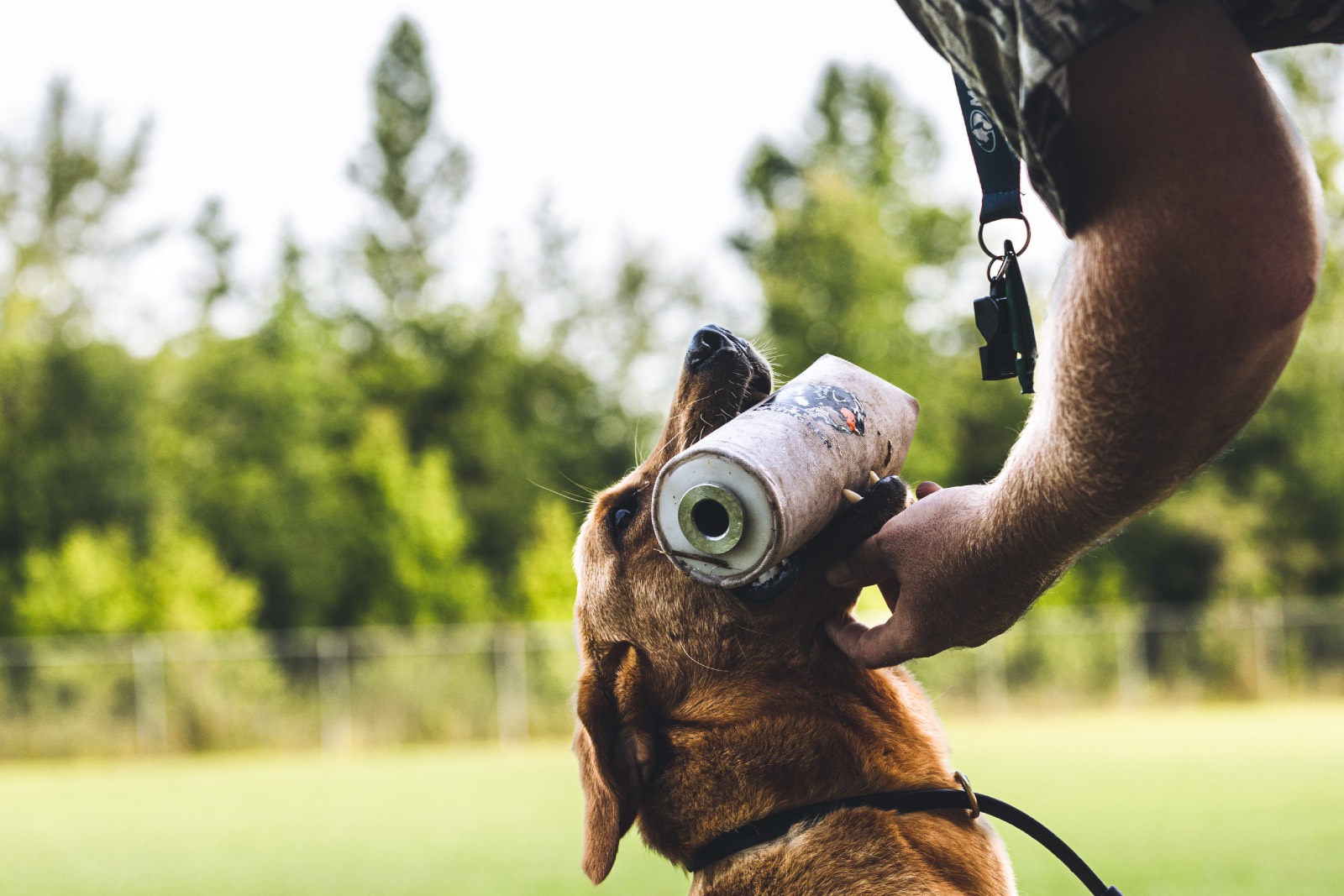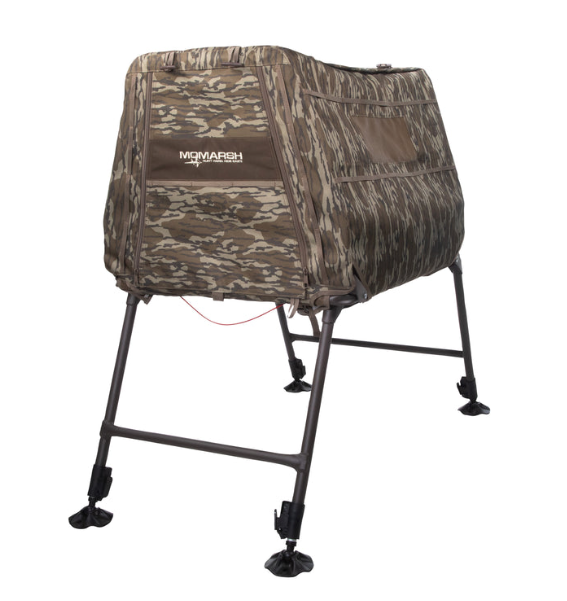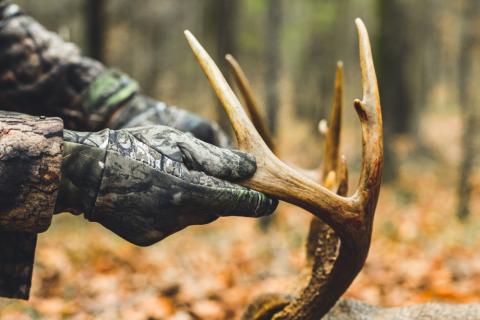
Bill Gibson, Head Trainer of Mossy Oak Gamekeeper Kennels
Beginning Advanced Retriever Training
After much evaluation of pup’s progress and satisfying yourself that pup is “steady”, demonstrates a full understanding of the commands “heel,” “sit,” “stay,” “place,” and “here,” and is picking short marks and trailing memories, the pup is ready for starting advanced retriever training. The following paragraphs set forth the beginning the means and methods of the process. First, we start with drills for unknowns and slowly progress to blinds. Training equipment required at this stage is at least four (4) white bumpers, four (4) orange bumpers, and several orange or yellow tennis balls.
Sequence 1–Unknowns: Before taking pup out of the kennel, along a fence line or straight trail, with very low grass, at a distance of twenty (20) yards from the place where pup will be positioned, drop a white dummy. Go another ten (10) yards and drop a second white dummy. Repeat this placement and drop two (2) more white dummies. Get the pup out of the kennel and after completing steadiness drills, heal pup to the line, about twenty (20) yards from the first white dummy, give the command “sit.” Align pup’s spine and head with the dummy; place your open hand in front of the dog and when pup locks onto the dummy, release him/her by calling his/her name (or with whatever release command you choose to use) and snapping your fingers on your casting hand. Pup should take a line to the dummy and return on the same line. If pup fails to get the dummy, move closer and try again until pup is successful. Then move on to the second dummy, third dummy, and lastly the final or fourth dummy. Again, when pup is fully successful and you are satisfied with his/her performance, repeat steadiness drills, and then end the training session for the day. Repeat the sequence each day until pup demonstrates to you that he/she fully understands the drill. After the first couple of days, move the dummies out further and further until pup is running from fifty (50) to one hundred (100) yards.
Sequence 2- Unknowns/Blinds: Using the same set up discussed in sequence 1above, drop a white dummy at twenty yards, then drop another white dummy at forty yards, then an orange dummy at sixty yards and lastly, an orange dummy at eighty yards. Send the pup as before. If pup struggles move closer until he/she is successful. Repeat the sequence each day until pup demonstrates to you that he/she fully understands the drill. After the first couple of days move the dummies out further and further until pup is running from fifty (50) to one hundred (100) yards or more.
Sequence 3- Blinds: Again, using the same sequence and distances, set out four (4) orange bumpers and then a tennis ball. If using a fence drop the tennis ball in a straight line but past the end of the fence. In the case of a straight trail or mowed path, place the tennis ball past the end of the trail or path. Send pup as before. If pup struggles, make appropriate adjustment(s) until pup is successful. Repeat the sequence each day until pup demonstrates to you that he/she fully understands the drill. After the first couple of days move the dummies out further and further until pup is again running from fifty (50) to one hundred (100) yards or more. The last retrieve is purposely set out beyond the fence, path etc. to start transitioning pup from a clearly defined path to an undefined line.
This method gives the pup an early start on both unknowns and blind retrieves. At risk of repeating myself, the white dummies placed in low grass are in pup’s plain sight and pup should be able to lock onto each one before he/she is sent. These retrieves are called “unknowns” simply because even though the pup did not see them thrown or placed, he/she can easily see them in low grass. Conversely, the color orange falls within a color spectrum that pup cannot see, even in low grass, and therefore are designated as “blinds,” because the pup did not see them placed and cannot visually see the dummy. At a minimum, pup should have learned the new skill sets and/or reinforced prior learned skills sets as follows:
1. To leave the line in the same direction that his/her spine and head is pointing, that being the same direction indicated by the handler’s hand.
2. To trust the handler, because when pup traveled in the direction of the cast, he/she found his/her reward, the dummy.
3. That he/she must be steady and remain calm until commanded to leave the line by the handler.
4. That all retrieves are not seen and to use his/her nose to locate the dummy once in the area of the fall.
Keen observation on your part, as the handler/trainer, will allow you to make proper decisions regarding the pup’s level of performance and decide when the time is right to elevate the pup to the next level of training. Don't rush this process. Be objective in your evaluation of pup’s abilities and progress. When you decide the time is right and the pup is ready to move on, introduced him/her to the next level the “push-pull drill.”































